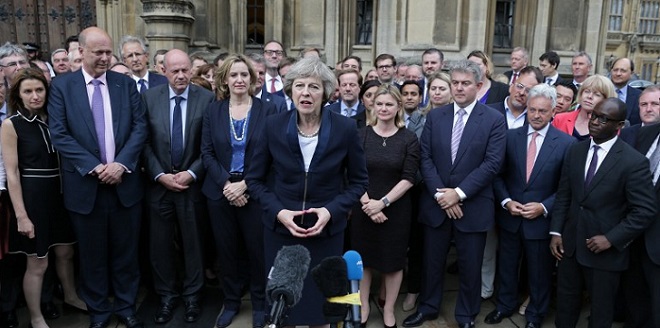
Birmingham, United Kingdom | AFP |
Facing ever-louder calls to define what Brexit means, the honeymoon is already over for British Prime Minister Theresa May after her meteoric rise to Downing Street following the vote to leave the EU.
May swept to power ultimately unopposed in July in an internal Conservative Party leadership contest, promising to restore stability after the shock referendum result which prompted David Cameron to quit.
The ex-interior minister, who turned 60 on Saturday, became only Britain’s second female premier after fellow Conservative Margaret Thatcher, and her no-nonsense style has fuelled comparisons.
With a reputation as a hard-headed pragmatist, May — who quietly backed Britain remaining in the EU — has shown little sign of giving away her Brexit negotiating hand and vision for the country’s future relationship with the bloc.
Pollsters warn that public perceptions of May as unshowy but determined — she was once labelled a “bloody difficult woman” by senior Tory Ken Clarke — could turn negative if she does not adopt a more collaborative style.
Asked about May’s performance, a YouGov poll last month found that 46 percent thought she was doing well overall but only 32 percent said she was likeable.
“People in our (focus) groups noted with approval that there seemed a more formal, businesslike air to things, with less emphasis on PR than we had been used to in recent years,” Conservative donor turned pollster Lord Michael Ashcroft wrote in September of her new premiership.
“They hoped her admirable drive and determination did not turn over time into stridency and refusal to listen.”
Clergyman’s daughter
May is reluctant to give away details of her private life but is known for her eye-catching shoe collection and love of walking, cookery and cricket.
In 2013, she revealed she has Type 1 diabetes but insisted it would not affect her career, saying it was a question of “head down and getting on with it”.
Born Theresa Brasier in 1956, her father Hubert was an Anglican clergyman, one of several points which has drawn comparisons with German Chancellor Angela Merkel.
Her education — at a series of little known state and private schools — has been contrasted with the elite Etonian background of Cameron and many in his “Notting Hill Set”.
Like Cameron, she attended Oxford University but kept a low profile. It was there that she met her husband Philip, a banker. They were reportedly introduced by Benazir Bhutto, later Pakistan’s premier.
The couple married in 1980 but could not have children.
May worked in finance, including at the Bank of England, before being elected to parliament for the London commuter town of Maidenhead in 1997.
As Conservative chairwoman in 2002, she made waves by suggesting the Tories were seen as “the nasty party” and needed to overhaul their image.
‘Few signals’
In Cameron’s government, May served six years as interior minister — one of the hardest jobs at Westminster which has wrecked a string of other political careers.
Supporters say she notched up a string of achievements like deporting radical cleric Abu Qatada to Jordan and standing up to the Police Federation, the powerful police officers union, over a string of scandals.
On becoming prime minister, May pledged on the steps of Downing Street to tackle “burning injustice” and make Britain “a country that works for everyone”, not just the privileged few.
So far, she has signalled a break with the Cameron years, notably backing the creation of academically selective state-funded schools which he had opposed.
But there is little sense yet of a clear policy framework for her government over two months after she became premier.
“What’s intriguing to me about Theresa May’s government is how few signals it has given,” said Tony Travers, professor of government at the London School of Economics.
 The Independent Uganda: You get the Truth we Pay the Price
The Independent Uganda: You get the Truth we Pay the Price



